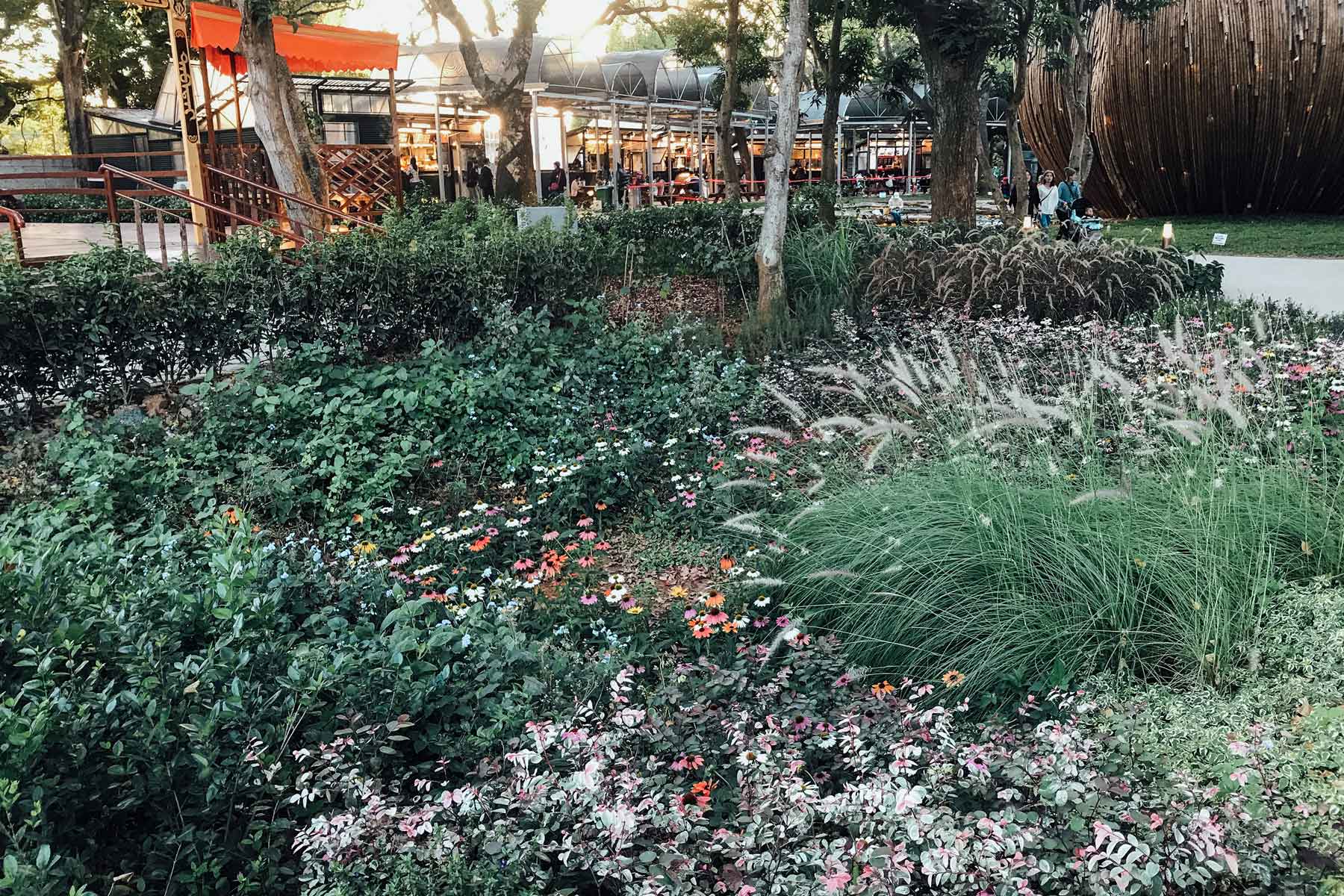Taichung Exposition World Flora
The agricultural improvement and domestication of a variety of species at different topography and climate diversity is a soft manifestation of the national power momentums in Taiwan.
The juxtaposition of plants from different altitudes is also the main theme of the Forest Area at the Taichung World Flora Exposition. The 15 acre Houli Forest Campus is built on an existing lush woodland. The existing vegetation of camphors, bead trees, banyan trees, and formosan sweet gum is preserved and becomes the stage for the plants of the Flora Exhibition. The scattered herbal and bush plants constitute the miniature landscape of the mountainous country. The Formosan plants welcome visitors to the gardens that represent twenty eight different countries.

Machilus Castanopsis zone in medium to low elevation
Photography: Motif Planning & Design Consultants
PROJECT BRIEF
Meeting with Miniature Landscape, the blo- ssoming of human consciousness. With its tall mountains and lush forests, Taiwan has been called the beautiful island (Il Formosa) since the Spanish people “discovered” it in the seventeenth century. The young island contains five climatic zones and a multi-facet natural appearance. With 700 ferns species and 5,000 native plants on the dramatic topography, human life changes along with different ecologies at different topographical and climate conditions. The shifting distribution of the vegetation and plant successions reveal the landscape for living conditions over the past centuries in Taiwan. The Forest Garden Area of the Floral Exposition discloses the diverse reality of Taiwan. Combining agricultural cultivation and aesthetics of space, the planting design simulates the processes of plants at different altitudes.

Ficus-Machilus Zone in Low Elevation
Photography: Motif Planning & Design Consultants
This Forest is the only and the largest botanical garden that represents a miniature of plants from 5 climatic zones: temperate zone, warm, subtropic, rainforest and tropic zone. Exhibiting the 100-year living landscape in Taiwan. Listen intently to the blooming sounds, the blooming sounds of human consciousness.

Quercus zone
Photography: Motif Planning & Design Consultants
DESIGN CHALLENGE
When doing planting design, instead of coming up with topics that are a flash in the pan or flashy designs that incorporate various kinds of flowers, we aim to exhibit faithfully the real landscapes of Taiwan. In the process, the selection and acquirement of plant species was the biggest challenge for our team. Fortunately, there is a database with more than 10,000 varieties of indigenous species available so we were easily able to find high-mountain plants that were already adapted to flat lands or plant species of mid-to-high altitude that are cultivated to adapt to flat lands. Tourists said that they didn’t see flowers in the “Forest”. I think the point is not flowers; the point is whether or not you take time and look each and every inch of land you walk on!

Master Plan
Illustration: Motif Planning & Design Consultants
SUSTAINABILITY
Most of the plants in the Forest of Taichung World Flora Exposition are perennial woody plants, improved grass used in animal agriculture, alpine plants that are cultivated to adapt to the weather of flat lands or foreign flowers that grow flourishingly in Taiwan, thus “natural succession” rules the Forest. As a result the needs to change plants, maintenance and management as well as trimming are reduced to the minimum; the water for irrigation comes from the detention pond, recycled underground rainfall and tap water; before planting, organic fertilizers are mixed in the soils to ensure sufficient nutrients for the plants. There is an uncultivated land in the garden that allows plants to breed and grow freely. No artificial fertilizers, no irrigation, no weeding, and yet it is full of life!
“The Garden is about respecting the environment and cherishing the resources on earth.”

Plantation Plan Illustration: Motif Planning & Design Consultants








